Why I Introduced NeurOptimal Neurofeedback to My Practice
Learn how neurofeedback devices differ and which ones you can use for sleep hygiene or promoting your brain self-regulation. See the difference...
Wondering how you'll feel after a neurofeedback session? Learn more about the potential benefits and sensations in our latest blog post.
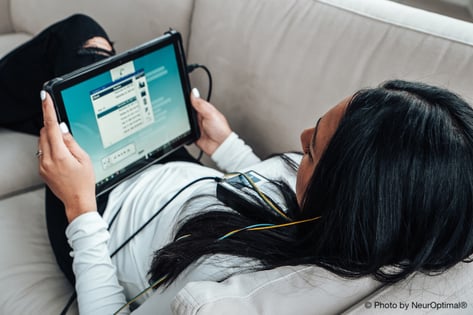 Before we talk about what you'll experience from doing neurofeedback we need to step back and talk about what is happening in the brain that neurofeedback addresses. The brain is a machine of habit, and it creates automatic brainwave patterns and those patterns are meant to be solutions to our here-and-now problems. We have homework in front of us, need that focusing brainwaves pattern. When those patterns are not in alignment with our present needs we call them "symptoms" or "problems", such as feeling anxious or being scatter-brained. Even if these patterns are maladaptive, the brain tends to repeat them and requires a nudge to change. In order for new patterns to be created, old ones must first be disrupted. This is where neurofeedback comes in.
Before we talk about what you'll experience from doing neurofeedback we need to step back and talk about what is happening in the brain that neurofeedback addresses. The brain is a machine of habit, and it creates automatic brainwave patterns and those patterns are meant to be solutions to our here-and-now problems. We have homework in front of us, need that focusing brainwaves pattern. When those patterns are not in alignment with our present needs we call them "symptoms" or "problems", such as feeling anxious or being scatter-brained. Even if these patterns are maladaptive, the brain tends to repeat them and requires a nudge to change. In order for new patterns to be created, old ones must first be disrupted. This is where neurofeedback comes in.
Dynamical neurofeedback is 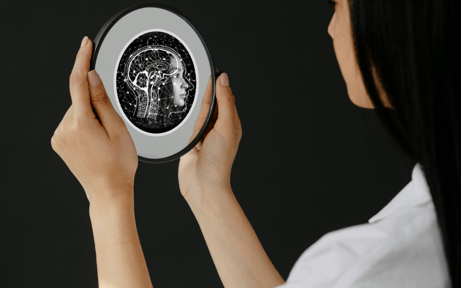 like a mirror for your brain, through the brain training sessions it increases awareness of patterns in need of support. Like looking in a mirror at your body to see what is out of alignment, neurofeedback shines a light on the electrical patterns in the brain that give rise to our everyday psychological symptoms. For example, if you’re already tired, a NeurOptimal® (Dynamical neurofeedback) session, highlight for you the exhaustion that is being ignored or insufficiently addressed. So much so, you might even fall asleep during the session!
like a mirror for your brain, through the brain training sessions it increases awareness of patterns in need of support. Like looking in a mirror at your body to see what is out of alignment, neurofeedback shines a light on the electrical patterns in the brain that give rise to our everyday psychological symptoms. For example, if you’re already tired, a NeurOptimal® (Dynamical neurofeedback) session, highlight for you the exhaustion that is being ignored or insufficiently addressed. So much so, you might even fall asleep during the session!
The type and degree of your habitual patterns when you sit down for a session, the number of sessions you have done and your level of self-awareness can all impact how you feel after a neurofeedback session.
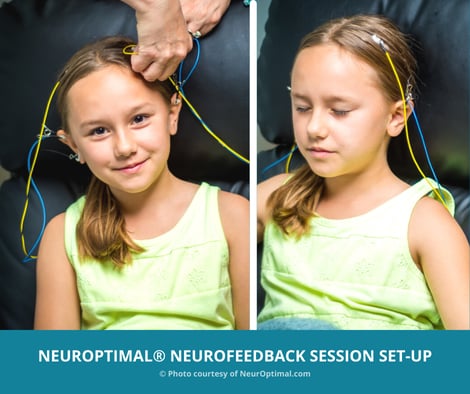 After a single neurofeedback session, there is no "average" experience as each brain is different and the same brain is different in any given moment. Depending on many factors including your current state and how quickly your brain is able to learn new things, there are a range of possible feelings you may have after any given session. Some might report experiencing a sense of clarity, focus, or calm. Others might not notice any discernible change in the moment. What's important is to be in-tuned with your own internal evolution, rather than to compare it to an external standard, even if this can give an idea of progress. Listening to your body and mind is key to noticing how you are benefiting from neurofeedback.
After a single neurofeedback session, there is no "average" experience as each brain is different and the same brain is different in any given moment. Depending on many factors including your current state and how quickly your brain is able to learn new things, there are a range of possible feelings you may have after any given session. Some might report experiencing a sense of clarity, focus, or calm. Others might not notice any discernible change in the moment. What's important is to be in-tuned with your own internal evolution, rather than to compare it to an external standard, even if this can give an idea of progress. Listening to your body and mind is key to noticing how you are benefiting from neurofeedback.
As the brain can create maladaptive patterns in many areas of cognition and emotion, clients will train for a variety of different reasons. The most common are for support with executive functioning and learning, support with emotional regulation, sleep, and brain injury recovery. The improvements are best seen through the shifting of thought patterns, emotions and behavior changes.
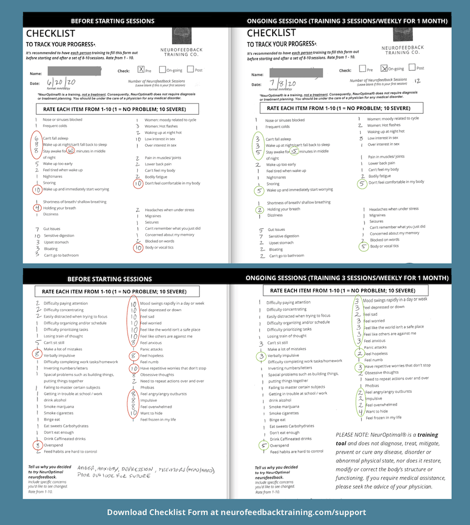
Clients often report an overall and vague sense of "feeling better" and then through a more focused look at what is different notice that they are sleeping more deeply, less reactive to stressors, feeling more focus and ease with schedules. For those who are interested in research on neurofeedback, NeurOptimal® results have also been backed up by research which is available to the public on a number of different topics.
Because the changes are from the automatic brain shifting to unstick those maladaptive patterns that are cognitive, emotional and structural, tracking the changes through self-reporting checklists as the best way to monitor progress. When the client lacks self-awareness, seamless change can be hard to notice and the checklists become an important prompt to register the changes.
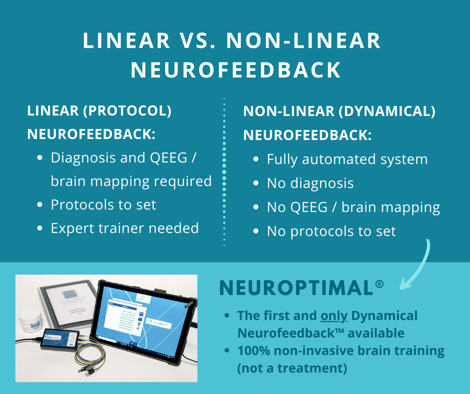 There are two main forms of neurofeedback: protocol/linear and dynamical/non-linear. The first kind is referred to as "classical" or "traditional" neurofeedback mainly because it was the first model created based on the computer technology of the 80s and 90s.
There are two main forms of neurofeedback: protocol/linear and dynamical/non-linear. The first kind is referred to as "classical" or "traditional" neurofeedback mainly because it was the first model created based on the computer technology of the 80s and 90s.
Classical or protocol neurofeedback involves starting with a brain map or QEEG (a snapshot of the brain's frequencies), relying on a diagnosis or an analysis of the map, and involving a skilled clinician to set protocols or standards for the brain to achieve based on the diagnosis or map. Essentially, protocol neurofeedback pushes or pulls the brain into a particular desired state (by reducing or augmenting specific frequencies tied to specific symptoms/diagnoses). As a result, this form of neurofeedback is considered a treatment because targets specific symptoms as reflected in the mapping and assumes when those maladaptive frequencies are changed the symptoms will be resolved.
The second form of neurofeedback, dynamical, evolved out of protocol-based systems and newer computer speeds and other advancements. The design is targeting brain function as a whole process, and optimizing the overall functioning instead of looking at specific symptoms and the associated maladaptive frequencies. Considered the latest technology in neurofeedback, NeurOptimal® is the only dynamical system currently on the market. Rather than purposely directing the brain on a particular path towards health, dynamical neurofeedback relies on the brain's natural capacity for detecting dysregulating patterns and improving functioning through applied neuroplasticity.
This system is teaching the brain to identify and correct maladative patterns; like training the body to walk correctly, the design of dynamical neurofeedback is teach the brain to function dynamically in response to constantly changing needs. Brain training rather than symptom treatment. The process of achieving results is "diagnostically agnostic" meaning it doesn't rely on a diagnosis and setting protocols based on that information. Additionally, the brain map functioning is built in to the system in real time. Instead of relying on a fixed image of the brain to determine progress, NeurOptimal® tracks brain activity in real-time and provides feedback precise to each moment.
It depends on which system is being used. With protocol/linear systems, being able to target specific frequencies makes it possible to have temporary side effects due to the suppression or augmentation of these frequencies. With dynamical NeurOptimal® neurofeedback, looks at the brain as a whole and doesn't produce side effects.
To elaborate on why this is the case, NeurOptimal® is non-invasive (it doesn't introduce anything to the brain i.e. electrical currents) and doesn’t push or pull the brain (direct it on a particular electrical path). Because nothing is added to the brain and it is merely receiving information rather than being told what to do, any effects that the brain experiences is from its own autonomous change.
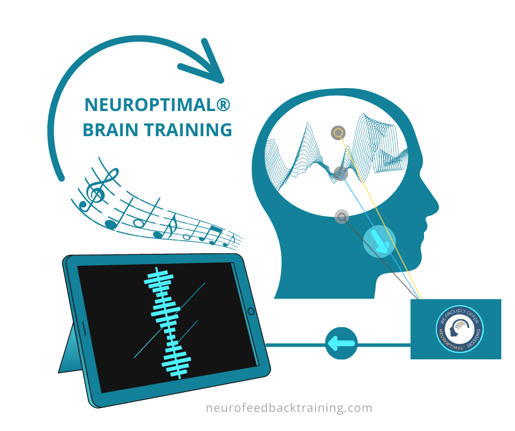
NeurOptimal® communicates with the brain in its own electrical language and engages the brain’s natural ability to detect what is dysfunctional and correct itself through the process of neuroplasticity. The brain is its own expert and naturally desires to move away from actions that are misaligned with here-and-now needs and into states of regulation and alignment. NeurOptimal® provides the precisely timed cues to the brain so that it can see all the information: current environmental needs and what is habitual. During a session the software gathers data about the brain's electrical activity 256 times per second, in every moment of feedback, the brain is brought back into the here-and-now. Essentially, the feedback is disrupting habitual patterns at precisely the right time so the brain is given the opportunity to rearrange itself and pursue better ones in accordance to the environment.
Read Also:
Is Neurofeedback A Sham? How do I know if It's Working?
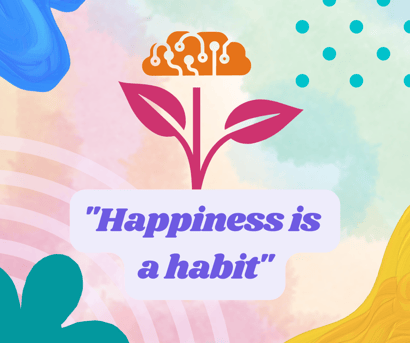 Since neurofeedback training is comparable to learning any kind of skill, progress tends to be non-linear. Whether it's learning a new instrument or language, rewiring the brain takes practice and experimentation. Progress may fluctuate over time especially in the beginning as the brain gains new footing and begins to release old patterns. As a result, during the initial stages of training, clients may feel "better" then have a day of "it's worse" or "I lost my gains." In truth, progress towards regulation is happening, it's just not linear. When clients are prepared for the positive shifts to be wobbly at first and require more training for steady change, tend to do well through the initial period. They are prepared and stay the course.
Since neurofeedback training is comparable to learning any kind of skill, progress tends to be non-linear. Whether it's learning a new instrument or language, rewiring the brain takes practice and experimentation. Progress may fluctuate over time especially in the beginning as the brain gains new footing and begins to release old patterns. As a result, during the initial stages of training, clients may feel "better" then have a day of "it's worse" or "I lost my gains." In truth, progress towards regulation is happening, it's just not linear. When clients are prepared for the positive shifts to be wobbly at first and require more training for steady change, tend to do well through the initial period. They are prepared and stay the course.
Part of the non-linear course is due to the brain receiving new information and recalibrating its responses, from being reactive (symptomatic) to responsive (regulated). This process can create discomfort or resistance to change, and can look like a spike in symptoms. For example, someone who is attached to their worrying and starts NeurOptimal® may find the spaciousness of a peaceful post-session state disorienting at first. This can be communicated as agitation or discomfort because the change is unfamilar and therefore, initially there is resistance. (Remember, we love our habitual patterns-regardless of their effectiveness-and doesn't easily change unless fully convinced)! This temporary outcome is not a side effect but merely the natural process of moving towards self-regulation. As the brain is not perfect as with any organ in the body, it may fumble around in a trial-and-error fashion in the process of learning what optimally suits it. With more feedback, the brain eventually begins to let go of patterns that aren't effective as new optimums take precedence. The key is time and consistency: giving the brain time to consolidate what it’s learning on a habitual basis.
 Assuming the brain's natural ability to learn and remember, once you learn something you don't "unlearn" it. If you’ve learned how to ride a bike, instinctually when you get on, you’ll know how to move it (you can consciously try to will yourself to forget- you might find it pretty hard to do so)! Your brain immediately remembers where to place your hands and feet and how to peddle.
Assuming the brain's natural ability to learn and remember, once you learn something you don't "unlearn" it. If you’ve learned how to ride a bike, instinctually when you get on, you’ll know how to move it (you can consciously try to will yourself to forget- you might find it pretty hard to do so)! Your brain immediately remembers where to place your hands and feet and how to peddle.
Brain changes follow a similar pattern, whether that's related to the stress response, mood, memory, or attention, as examples. Of course, life continuously introduces new challenges, stressors and transitions so we may be pushed off balance and require some sessions to get back on track or obtain a new optimal state. Imagine if you didn't ride a bike for a very long time-you might be rusty!-but the amount of times you need to practice to ride a bike with expertise again will be significantly less than before you even learned.
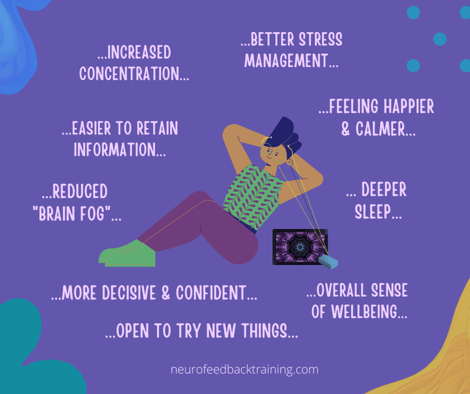 Learning and change take work, especially if they are to produce significant and long-lasting results. Like any modality of training, neurofeedback takes dedication and time. Because every brain has the ability create new neural pathways, the secret (not so secret) ingredient is training it! This means doing enough sessions over a significant amount of time consistently. The number of sessions and time for each person varies according to their individual symptoms, current stressors, whether there is active illness and the individual's goals.
Learning and change take work, especially if they are to produce significant and long-lasting results. Like any modality of training, neurofeedback takes dedication and time. Because every brain has the ability create new neural pathways, the secret (not so secret) ingredient is training it! This means doing enough sessions over a significant amount of time consistently. The number of sessions and time for each person varies according to their individual symptoms, current stressors, whether there is active illness and the individual's goals.
The most common reason for why neurofeedback doesn't work is due to lack of training, whether it is not doing them consistently or giving up prematurely.
When training, having a schedule for sessions helps and not allowing for any excuses to derail the schedule. Acting on thoughts like: "But do I really have the time to do a session?" are not allowed.
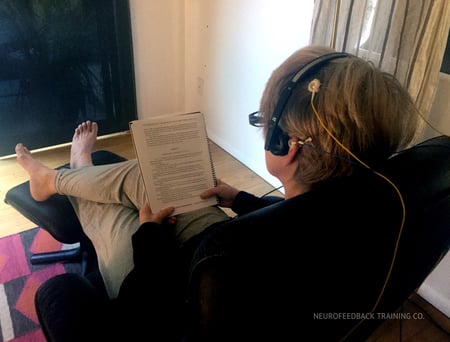
Additionally, since you don't have to be consciously aware of the feedback for it to work (as it engages the unconscious, automatic nervous system), you can be doing another activity simultaneously. As long as those activities don't involve too much movement that could distort sensor placement they are fine.Some activities include reading, working, sleeping, watching another screen (as long as the sound doesn't outcompete the feedback) and meditating. Combining neurofeedback with another activity may help to increase commitment to regularity of sessions over time.
It's also important to keep track of progress over time to help capture all of the seamless changes. Additionally, be aware of any new significant stressors or transitions that have come into your life during the training period. They can mask seeing the results of neurofeedback. This happens because a novel situation that significantly heightens the stress response has the potential to temporarily challenge any patterns working their way towards regulation. NeurOptimal® isn't a silver bullet but a tool that catalyzes cognitive and emotional regulation. When used in tandem with other healthy habits, it can help boost brain health and overall wellbeing.
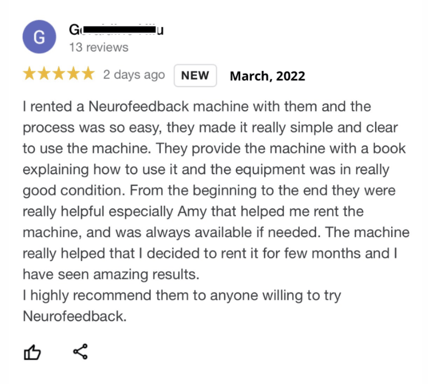
One of the best sources of information with regards to what a neurofeedback session/sessions feel like are testimonials from those who have experienced it.
Whether though video or written testimonials, clients as well as trainers share their personal take on how neurofeedback has impacted their lives.
"I felt at first tired after neurofeedback, but after my second session noticed I was very productive and have been focused and getting things done."
 After any given neurofeedback session, it can be difficult to tell what may be changing which is why consistency in training over time is important. Both the number of sessions and time for the brain to consolidate what its learned are necessary to catalyze and notice progress. Since no brain is the same and each individual brain is in constant flux, how each person experiences the neurofeedback will be unique to them. That being said, being able to meaningfully document change is important to monitor how it is taking effect. At the end of the day, the best way to understand how neurofeedback works is to experience it yourself. Good luck with the training!
After any given neurofeedback session, it can be difficult to tell what may be changing which is why consistency in training over time is important. Both the number of sessions and time for the brain to consolidate what its learned are necessary to catalyze and notice progress. Since no brain is the same and each individual brain is in constant flux, how each person experiences the neurofeedback will be unique to them. That being said, being able to meaningfully document change is important to monitor how it is taking effect. At the end of the day, the best way to understand how neurofeedback works is to experience it yourself. Good luck with the training!
Natalie Baker has over 25 years of experience as a licensed psychotherapist and has been a NeurOptimal® neurofeedback trainer since 2011. She is the founder of Neurofeedback Training Co., which offers in-person sessions and runs the largest nationwide home rental program for NeurOptimal systems. Natalie also teaches meditation and Buddhist psychology and specializes in working with anxiety, stress, ADHD, and trauma.
Learn how neurofeedback devices differ and which ones you can use for sleep hygiene or promoting your brain self-regulation. See the difference...
Want to try neurofeedback in Portland, Oregon but don't have time for the commute? Learn how renting NeurOptimal® home neurofeedback system will...
Neurofeedback training is a widely used term but at its core it is a feedback system to let the individual use changes in brain wave activity as a...
Be the first to know about new blogs